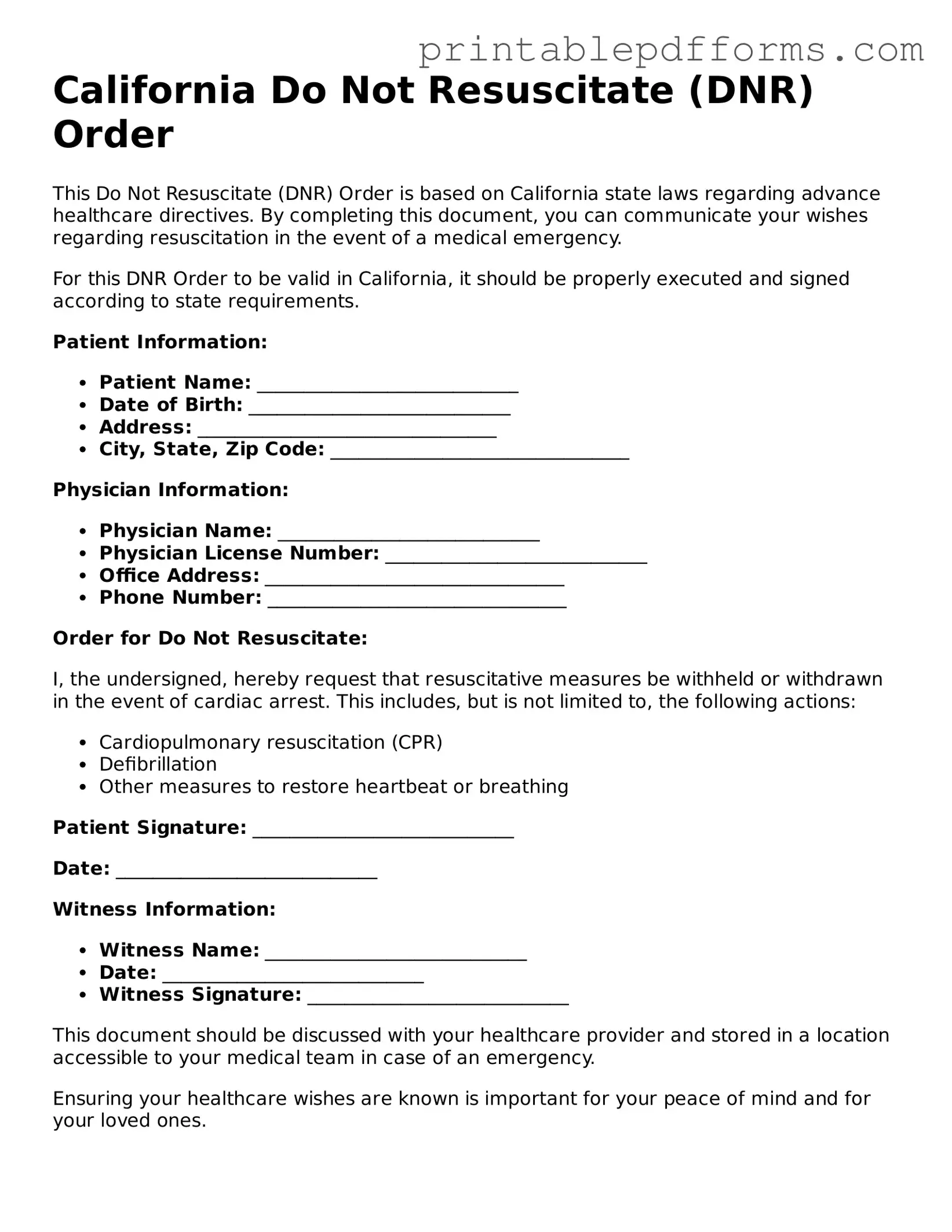What is a Do Not Resuscitate (DNR) Order?
A Do Not Resuscitate Order is a legal document that allows a person to refuse resuscitation efforts in the event of a medical emergency. This means that if a person’s heart stops beating or they stop breathing, medical personnel will not perform CPR or use other life-saving measures. It is important for individuals to understand that a DNR order specifically applies to resuscitation efforts and does not affect other medical treatments.
Who can request a DNR Order in California?
In California, a DNR order can be requested by a patient who is at least 18 years old and has the capacity to make medical decisions. If the patient is unable to make decisions, a legally recognized surrogate, such as a family member or legally appointed agent, may request the order on their behalf. The request must reflect the patient's wishes regarding resuscitation.
You can obtain a California DNR Order form from various sources, including:
-
Your healthcare provider or doctor’s office
-
Hospitals and medical facilities
-
Online through California’s Department of Public Health website
Once you have the form, fill it out carefully, ensuring that all required information is provided.
The DNR Order form requires specific information, including:
-
The patient's full name and date of birth
-
The name of the physician completing the order
-
The patient's signature or the signature of their authorized representative
-
The date the order is signed
It is crucial to ensure that the form is filled out correctly to avoid any confusion during a medical emergency.
Do I need a witness to sign the DNR Order?
No, a witness is not required to sign the DNR Order in California. However, it is advisable to have a trusted person present when you sign the document. This can help ensure that your wishes are understood and respected by others.
It is essential to keep your DNR Order form in a place that is easily accessible. Consider the following options:
-
Attach it to your medical records
-
Keep a copy in your wallet or purse
-
Provide copies to family members, caregivers, and your healthcare provider
Having the form readily available can help ensure that your wishes are honored in an emergency.
Can I change or revoke my DNR Order?
Yes, you can change or revoke your DNR Order at any time. To do this, simply create a new DNR Order form that reflects your updated wishes. Be sure to inform your healthcare provider and anyone else who has a copy of the original order about the change. It is essential to ensure that all copies are updated to avoid any confusion.
What if I am admitted to a hospital? Is my DNR Order still valid?
Yes, your DNR Order remains valid when you are admitted to a hospital. However, it is crucial to inform the hospital staff about your DNR status upon admission. They will typically review your order and ensure that it is documented in your medical records. This helps ensure that your wishes are respected during your hospital stay.
How does a DNR Order affect other medical treatments?
A DNR Order specifically pertains to resuscitation efforts and does not affect other medical treatments. You will continue to receive all other necessary medical care, including medications, pain management, and other supportive measures. The DNR Order is solely about your preferences regarding resuscitation in the event of a cardiac or respiratory arrest.
